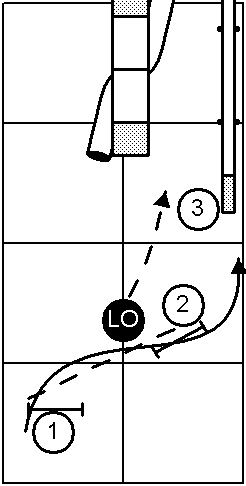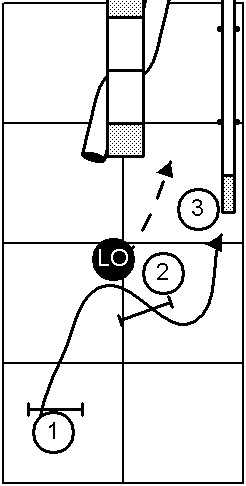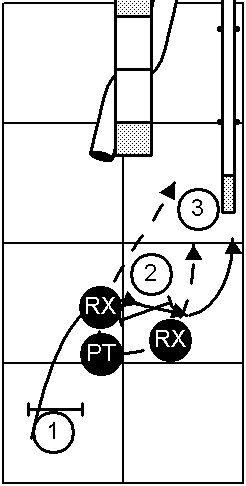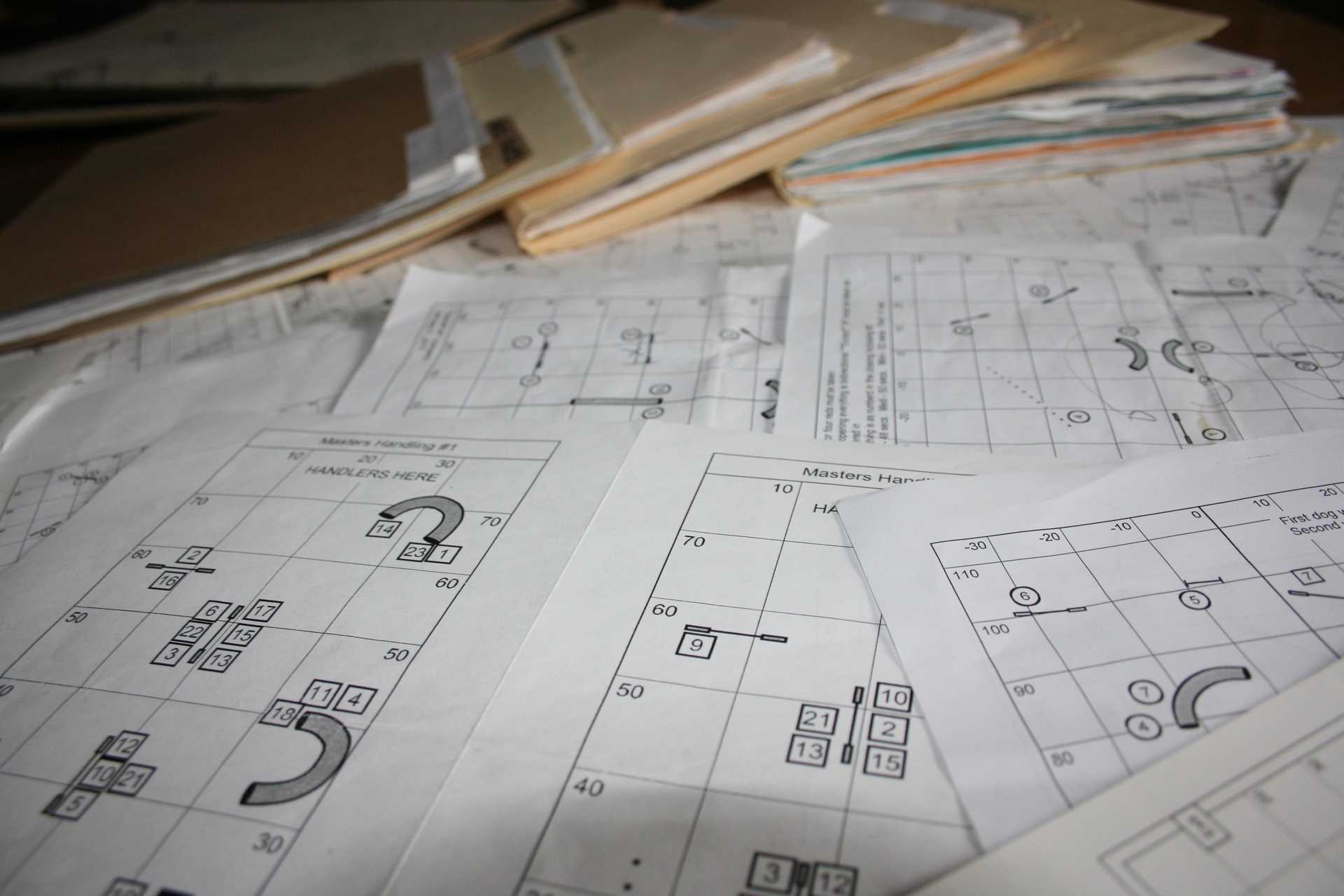Dana Pike Advanced Course Opening - Apr 22, 2005
22 Apr 2005
Dana Pike did it again - she designed another great course for class last night. But I'm just going to focus on the opening three obstacles. Dana made a minor changed in the location and rotation of the second jump in the opening sequence during class and it brought up some novel handling approaches.Below is the initial opening sequence. The first two jumps are oriented so that the handler can lead out and stand on the Handler Line Using the Handler Line - Front/Rear/Blind Cross LineHandler Line - Front/Rear/Blind Cross Line (the location where a Front Cross would have been located) as shown by the straight black dashed line. This type of lead out is often called a Lateral Lead Out. The handler’s left foot and hips are oriented towards jump 2 and the handler reaches slightly back with their right hand and calls the dog to their hand. Once the dog is over jump one the handler completes the movement towards jump two. As shown below, the dog takes the second jump at a sharp angle is setup nicely for the dog walk. This was the fastest and shortest of the handling approaches.

Dana felt we weren’t having enough of a challenge with the opening so she changed it on us by moving the second jump as shown below. Since most of us had used a Lateral Lead Out initially we used the same kind of handling with this orientation. In this case the handler really had to have a dog that would come to their hand far enough that when they turned the dog would be online to take the second jump. I am torn as to whether or not one could call this a V-Set V-Set Handling AlternativesV-Set or not. This is clearly a more difficult opening but we all ultimately succeeded. The most common failure was not waiting for the dog to come to the handler; in which case the dog would take the jump from the wrong side or run across the landing side face of the jump.
I should mention that running with the dog and performing a FrontCross Learning the Front Cross - VideoFront Cross at the “LO” location was also possible. The main concern was the off course to the tunnel for the faster, long striding dogs.

So the handling above was pretty straightforward. Dana also proposed that the handler could use a Post Turn Learning the Post TurnPost Turn/Shoulder Pull/Pivot Turn just before jump 2 and when the dog committed to the jump the handler would then Rear Cross Learning the Rear CrossRear Cross on the take off or landing side of the jump. It is hard to capture this handling in a diagram. At the completion of the Post Turn the handler can be pretty close to the dog and the jump; so if they are Rear Crossing on the take off side the are right at the jump. In this case I believe the dog always changed its Lead upon landing. Although some dogs might have gotten onto a left lead just as they took off - there were some really tight turns around the jump post. It is possible that the handlers who Rear Crossed on the landing side might have gotten the lead change on the take off side more frequently. Regardless of where the lead change occurred, this was definitely the shorter and faster way to handle this sequence.

Once again Dana opened my eyes to a more aggressive method for handling a sequence. The Post Turn - Rear Cross handling requires a confident handler and dog; there is the possibility for error - but it made for a fast and short path. This is a nice sequence that can be setup in a small space and practiced using all the handling methods.
If you enjoyed this article won't you please:  Thanks!
Thanks!
